Make the Most Out of Your Facebook Dynamic Retargeting Campaigns
by Ana Gotter • November 27, 2019
There’s a very big and very common misconception I see when it comes to Facebook Ads, where plenty of brands and advertisers believe that all you need is one good ad to drive immediate sales.
Can that happen? Of course. But you’ll never see your full selling potential—let alone your full ROAS—on a single campaign. The vast majority of users need to interact with you multiple times before they convert, and they need to see campaigns that are immediately relevant to them, their needs, and the pain points they have. Instead, a single ad is only going to drive a fraction of the results that you could see with a full campaign that uses retargeting.
When you’re using retargeting campaigns, you’re able to focus in on what parts of the original ads users are responding to, delivering them with more relevant and engaging ad campaigns that resonate most with them while increasing their exposure to your brand and products or services.
And when it comes to retargeting, Facebook’s dynamic retargeting campaigns are a strong choice. These campaigns allow you to show specific products to individual users automatically based on their past interactions with you, including the specific products and webpages they’d viewed before.
In this post, we’re going to take a look at how to get the most out of your Facebook dynamic retargeting campaigns so that you can strengthen your individual ads and your funnels, maximizing your ROAS on the platform.
Understand How They Work
If you want to truly get the most out of your Facebook dynamic retargeting campaigns, it’s essential to understand exactly how and why they work.
First, you’ll upload a catalog of your products to Facebook, which will include pictures, descriptions, the names of the products, and potentially pricing. You can do this manually with an excel sheet, though some commerce platforms like Shopify will have processes that can automate this for you. You can see some of the options here:
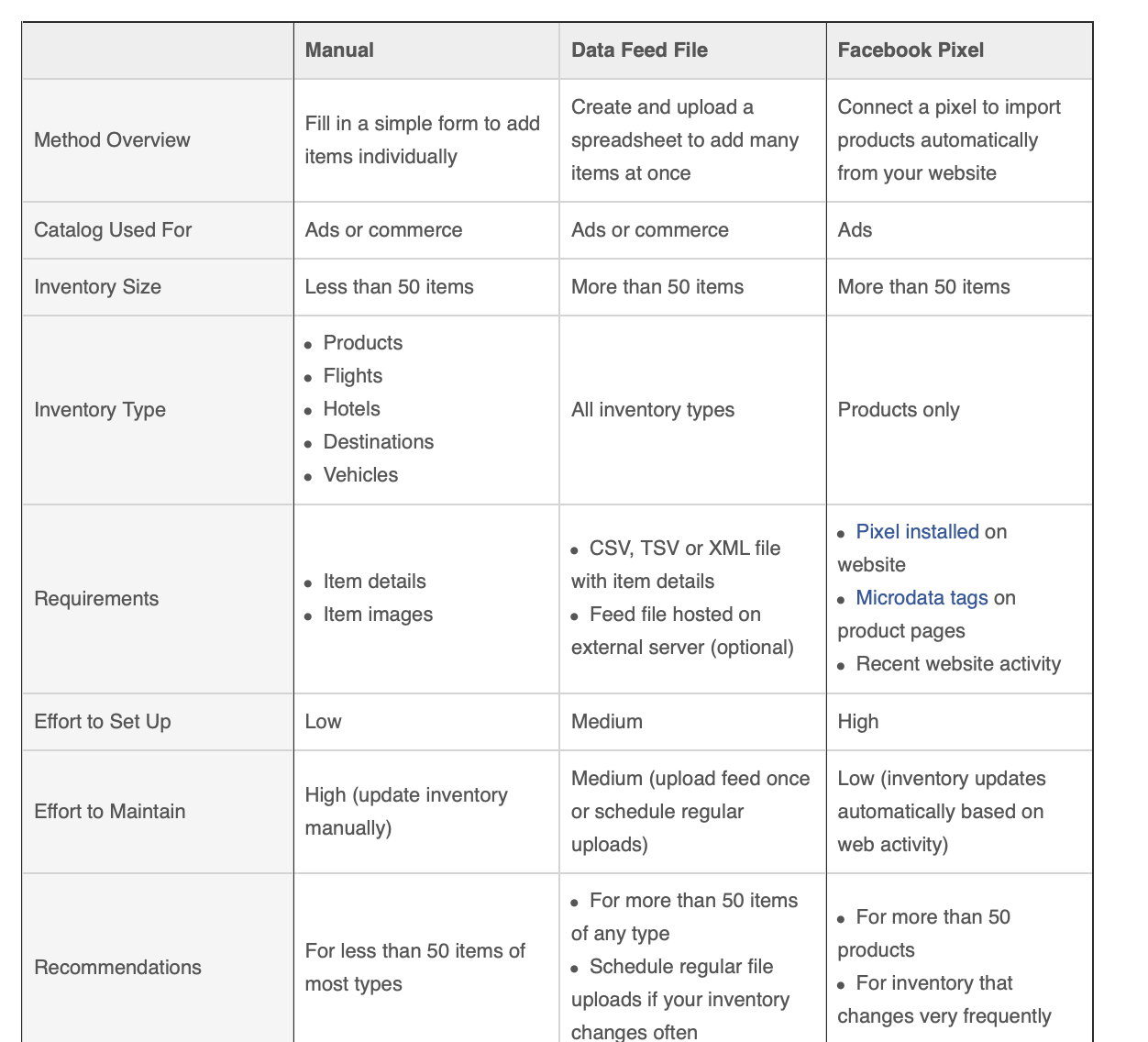
This catalog can be used to create “dynamic” ads, which means you only need to run a single ad and you’ll still have the ability to show fifteen different products to fifteen different people. The basic template—like the standard ad copy’s headline—can stay the same, but the product image, name, price, and description will be tailored to the specific viewer seeing the ad. You can see a great example of what this looks like in this ad from Facebook’s Ad Library:
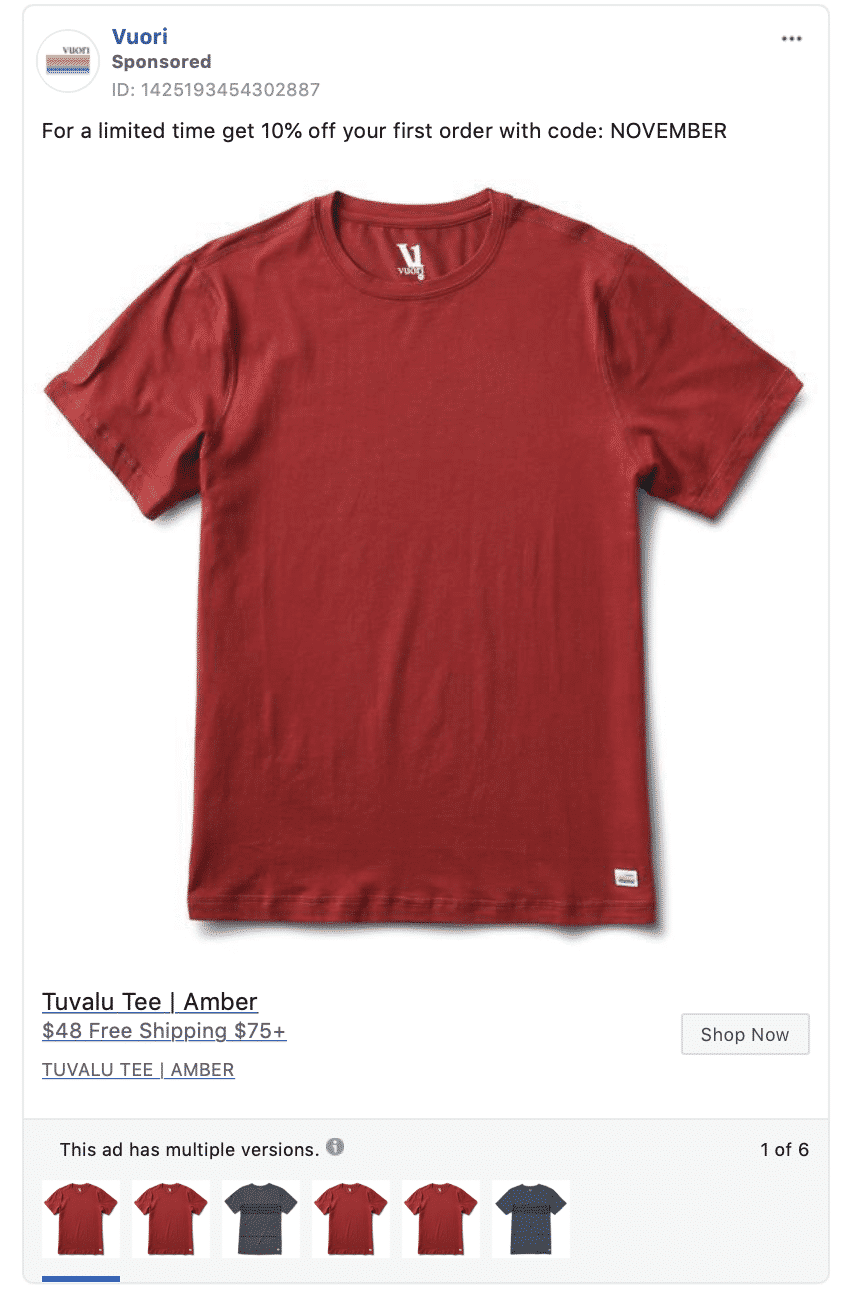
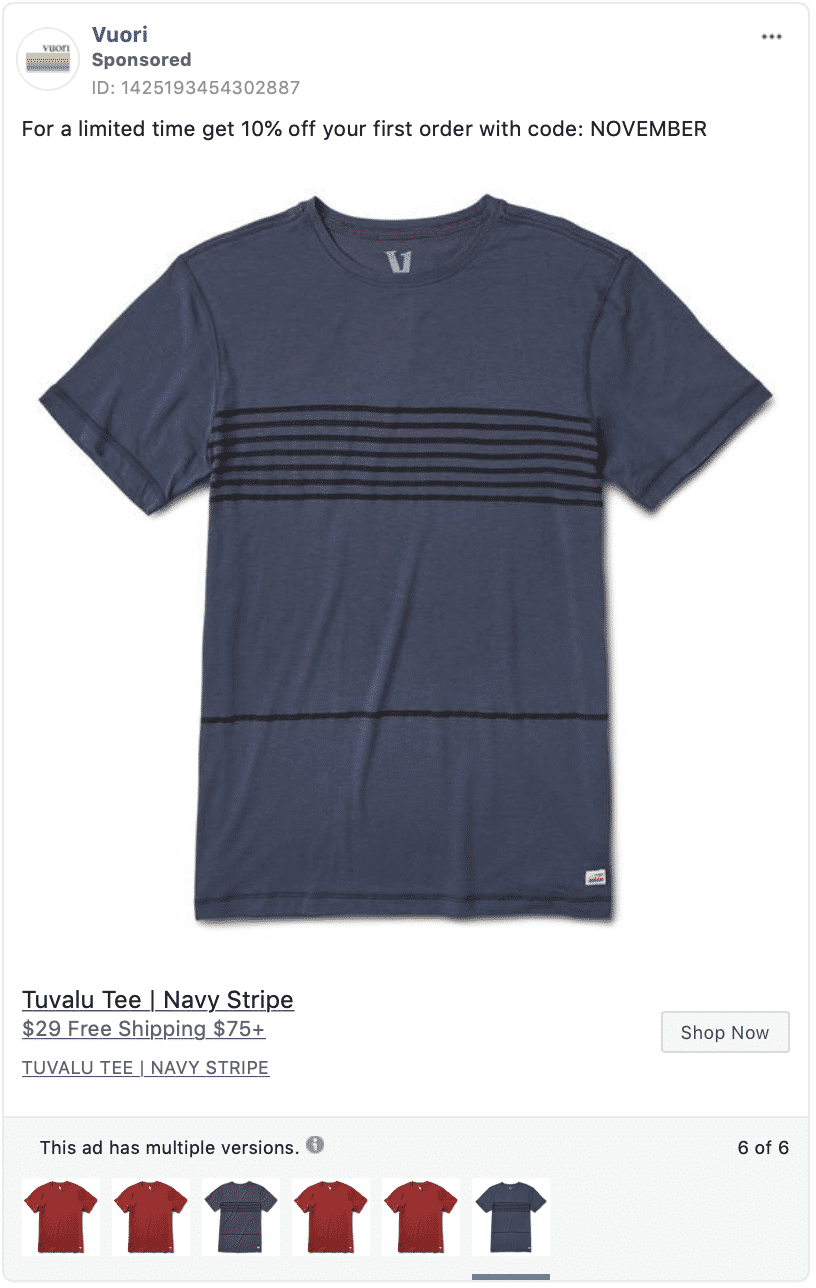
In most cases, brands are using retargeting to show relevant products to users who have viewed them online before. Users will view a product page on your site, and it will fire off the tracking pixel you have installed, alerting Facebook about what they’ve seen.
When you have dynamic retargeting campaigns up and running, users can then see an ad featuring that same product, encouraging them to come back and purchase. You get to choose how long you want to show users these ads after they’ve seen a product page, decreasing the likelihood of wasted impressions if you’re paying by CPM.
Once you understand how the platform works, it’s easier to optimize your campaigns for success. Let’s look at how to do that more in depth now.
Keep Your Retargeting Windows Open Longer
I worked with a client who had their dynamic retargeting campaigns to show up only a few days after users had viewed the actual product page, thinking that if they’d convert, they’d convert then or they wouldn’t at all.
This is a big missed opportunity. I’ve personally converted on a retargeting campaign I saw at least a full month (if not more) after viewing a product page, and again, sometimes people need to see the products more often.
Someone I know swears by keeping your retargeting campaigns going for up to 180 days, especially if you’ve got big events like the holidays or Black Friday coming up. Remember that you’re retargeting to warmer audiences, so they’re significantly more likely to convert, and if you’re optimizing for clicks or conversions you can keep your ad spend a little lower.
Offer Exclusive Discounts
Remember here that you’re targeting warm audiences, so they’re likely considering your brand, products, or services already, and they may just need a little bit of a nudge to convince them to purchase.
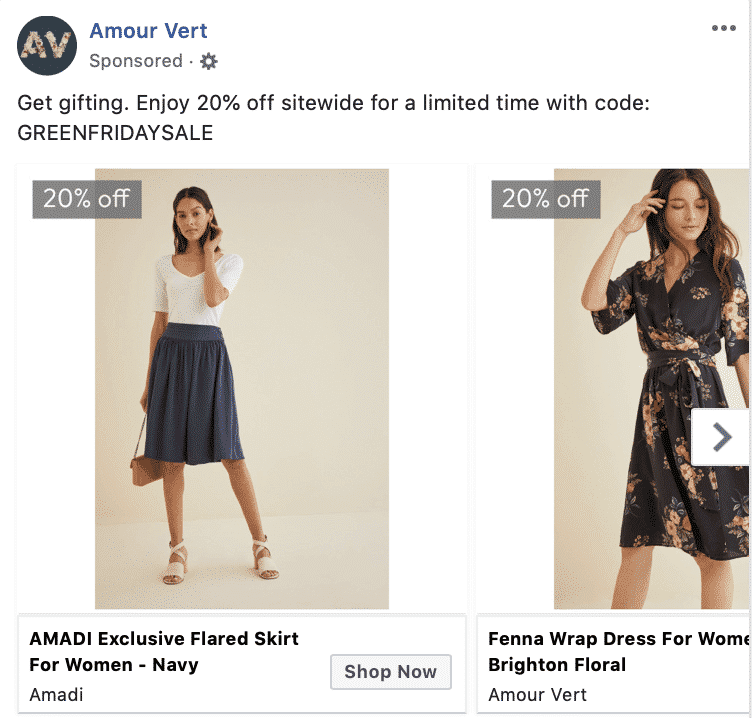
Set up retargeting campaigns that use coupon codes, Facebook offers, and promises of free shipping and returns in your dynamic retargeting campaigns. You should also still include some USP information about your product where possible, like mentioning “the highest quality vegan leather goods you’ll find, so you can be ethical and stylist” so that people remember why they want to purchase, too.
Leverage Timeliness
Is it almost Mother’s Day, or Black Friday, or New Year’s and you’ve got a great deal? Or is your product hyper-relevant, like gourmet chocolates for Valentine’s Day? Run campaigns that uses holiday-oriented copy and headlines to grab people’s attention and remind them why what you’re selling will make the perfect gift.
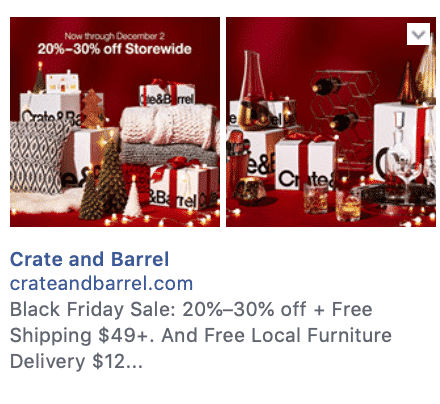
In addition to splurging on gifts, people are also more likely to splurge on themselves around holidays, you just need to remind them why your products are the ones they should choose.
Pro tip here: Holidays typically see a spike in market activity on Facebook, so you’ll want to plan accordingly. Be prepared for your bids to increase some, and make sure that you schedule your ad campaigns at least one week before you want them to start running; this gives you plenty of time to upload everything into the ad system, get it approved, and fix anything that’s needed before the big day.
Be Willing to Bid More on High-Value Products
You can create “product sets” within your product catalog, which allows you to organize your products into different categories.
If I’m selling all things tea, for example, I could have a product set for my top-of-the-line luxury tea seats, one product set for mid-range tea sets, one for tea accessories, and one for just the looseleaf tea itself.
This will not only allow you to create more accurate ad campaigns since you can create ad copy that speaks to the product set you’re promoting, making it more relevant, but it also allows you to segment your campaigns for bidding reasons, too.
Not all products offer the same profit margins. I might be able to spend $5 per click on my campaigns selling the luxury tea sets, but only $2.50 on the tea accessories campaign. While the purpose of dynamic retargeting is to automate your campaigns for you, you still need them to benefit you, so take some time to break down your campaigns here accordingly. If you’re willing to bid more on high-value, high-profit-margin products, go ahead and do so!
Use Exclusionary Targeting to Your Benefit
One quick tip that we want to add in here: While you want to retarget users who have seen your product pages, you only want to show them products that they haven’t actually converted on yet. Otherwise, you could end up wasting ad spend showing people something they’ve already bought when it would benefit you more to show it to other users, instead.
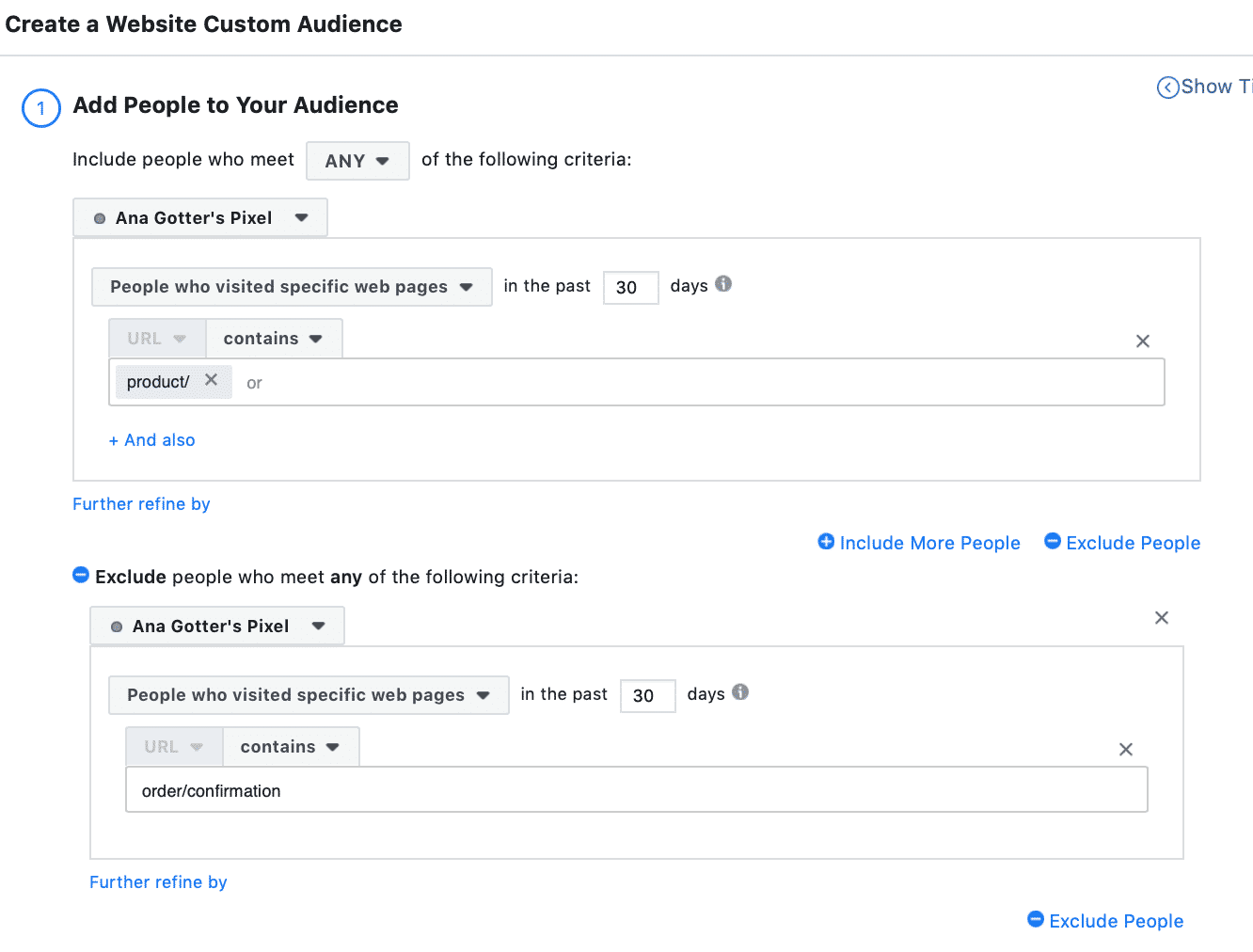
When setting up your campaigns, you can use exclusionary retargeting options, showing your campaigns to users who have seen certain product pages but only if they haven’t also seen your order confirmation page. This will help you show your ads to users who still need to convert, making your campaigns much more impactful.
Conclusion
Facebook’s dynamic retargeting campaigns can be incredibly valuable, but you’ll get more out of them if you know how to properly segment and optimize your campaigns accordingly.
And of course, as always, test everything. Make sure that your retargeting windows are working for you; test them by extending them and see if any additional conversions come in. You can try to optimize these tests by setting frequency metrics to ensure that the same people only see a single ad so many times within a set time period.
As you’re creating your campaigns, remember to always keep your audience niches at the center of your focus; remember to include copy that appeals to their pain points, needs, and motivations, and use headlines that could apply to specific product sets but that are still powerful enough to resonate with your target audience.
By the way, if you’d like some help getting your Facebook dynamic retargeting campaigns set up, let us know here or in the comments. We’d love to help!
What do you think? How do you make the most of your Facebook dynamic retargeting campaigns? What’s been most effective for you? Share your thoughts and questions in the comments section below!




